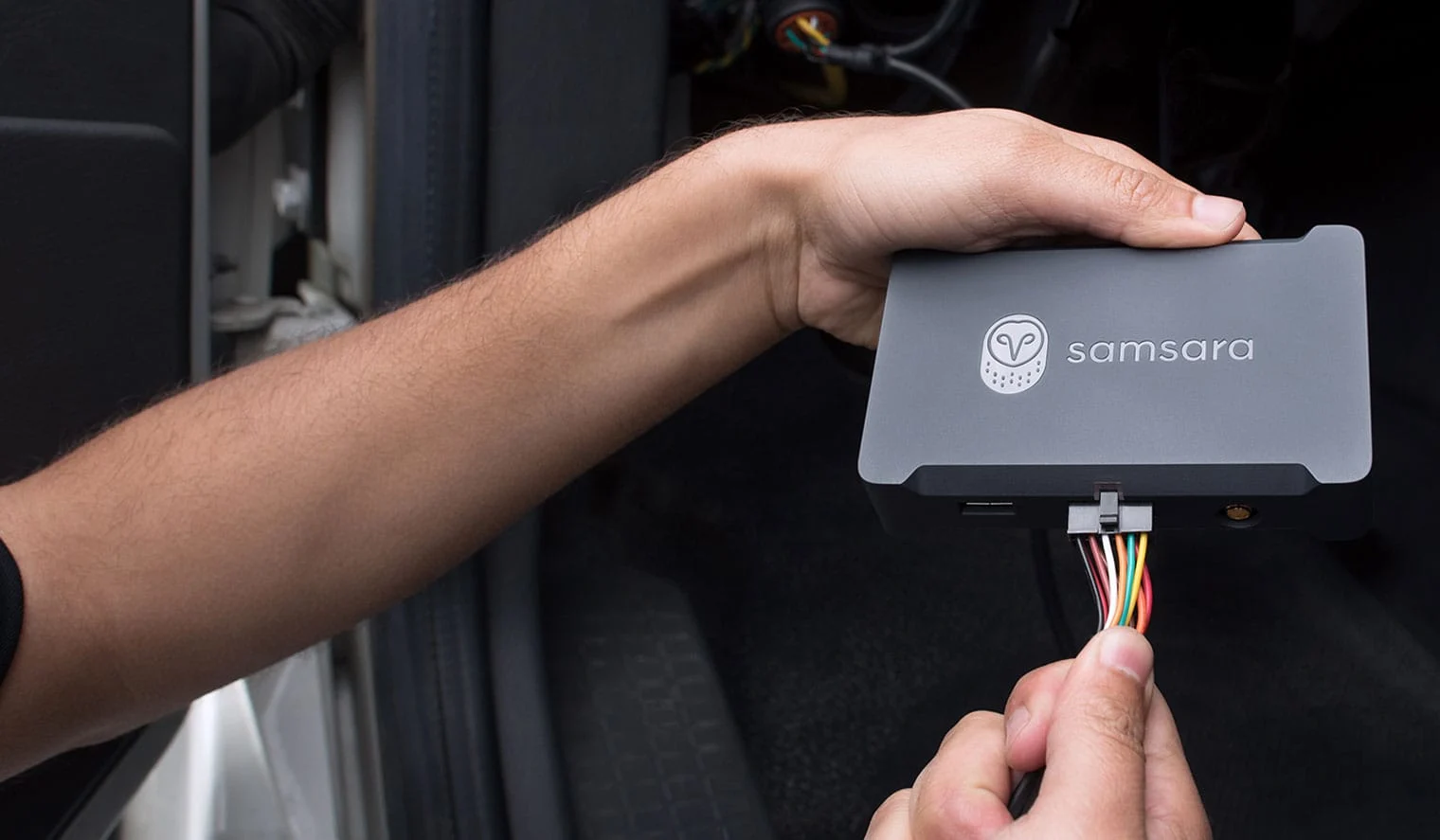Company News
New report: Physical operations are unprepared for natural disasters
October 7, 2025
Senior Vice President of Product and Engineering, Safety & AI

Get the latest from Samsara
Subscribe nowSince I was a kid, I’ve spent my life in and around the world of physical operations. My dad was a truck driver in Sweden, and I saw firsthand the pressures and risks that frontline workers face every day. They’re the ones who keep our world running. When the weather gets rough, disaster strikes, or an emergency happens, they show up. They get the job done. They keep our communities safe and thriving.
Lately, frontline work has become more challenging and unpredictable. Wildfires, hurricanes, floods—they’re becoming more frequent and severe, and that puts our people at risk. Because of that, at Samsara, we wanted to understand the challenges on the ground. We recently released a new State of Connected Operations Report—Plan, Act, Recover: Disaster Preparedness in Physical Operations. The findings are striking; most organizations are unprepared.
We surveyed 1,550 leaders across seven countries and the 21 industries that form the backbone of our economy—logistics, construction, utilities, and more. The report reveals something many operations leaders know instinctively: most organizations are not as prepared as they need to be. And that’s putting their business and people at risk.
These findings require our attention. When disaster hits, we expect frontline teams to be ready. They deliver essential goods, restore power, and protect our communities. Here are a few insights worth highlighting:
Global leaders acknowledge the preparedness gap: 83% say they need to be more prepared for natural disasters.
The good news—planning works: Following a disaster, 93% of organizations that actively plan for emergency events are able to return to normal operations within three days.
AI will be a game-changer: 89% believe AI will fundamentally reshape disaster response within the next five years.
So what does this mean for your business?
Download the reportSevere preparedness gaps are leaving organizations exposed
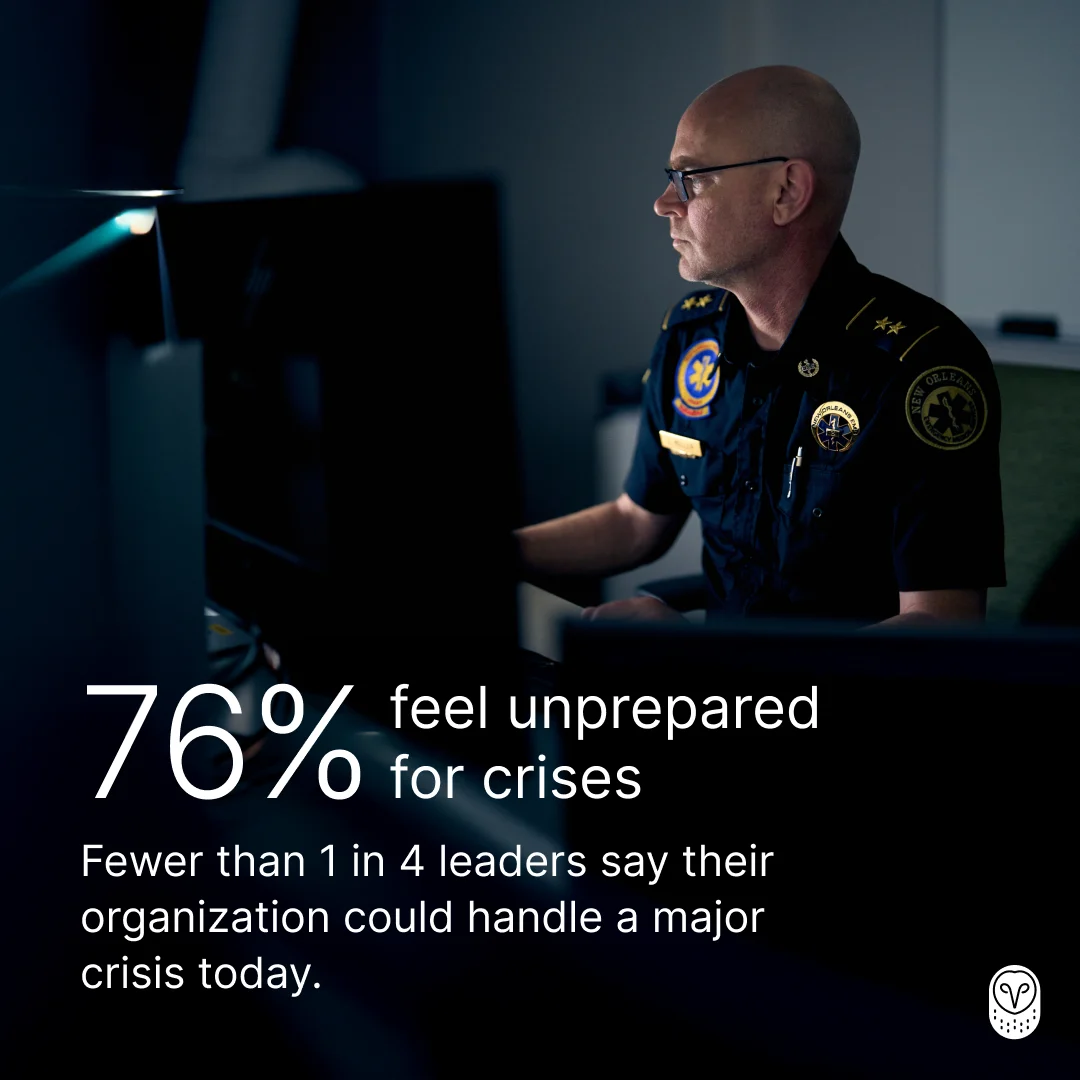
Teams are not ready: A striking 76% of leaders don’t feel like their organizations are adequately prepared for a crisis. Let that sink in. This means that when a crisis hits, we’re reacting instead of putting a plan into action. Only 24% feel ready to handle a major crisis and, overall, 83% of organizations say they want to be more prepared.
Businesses are still reactive: The report also shows that only 13% of organizations in disaster-prone regions are actively planning for events, leaving teams exposed and communities vulnerable.
Lack of visibility drives massive financial losses and safety risks
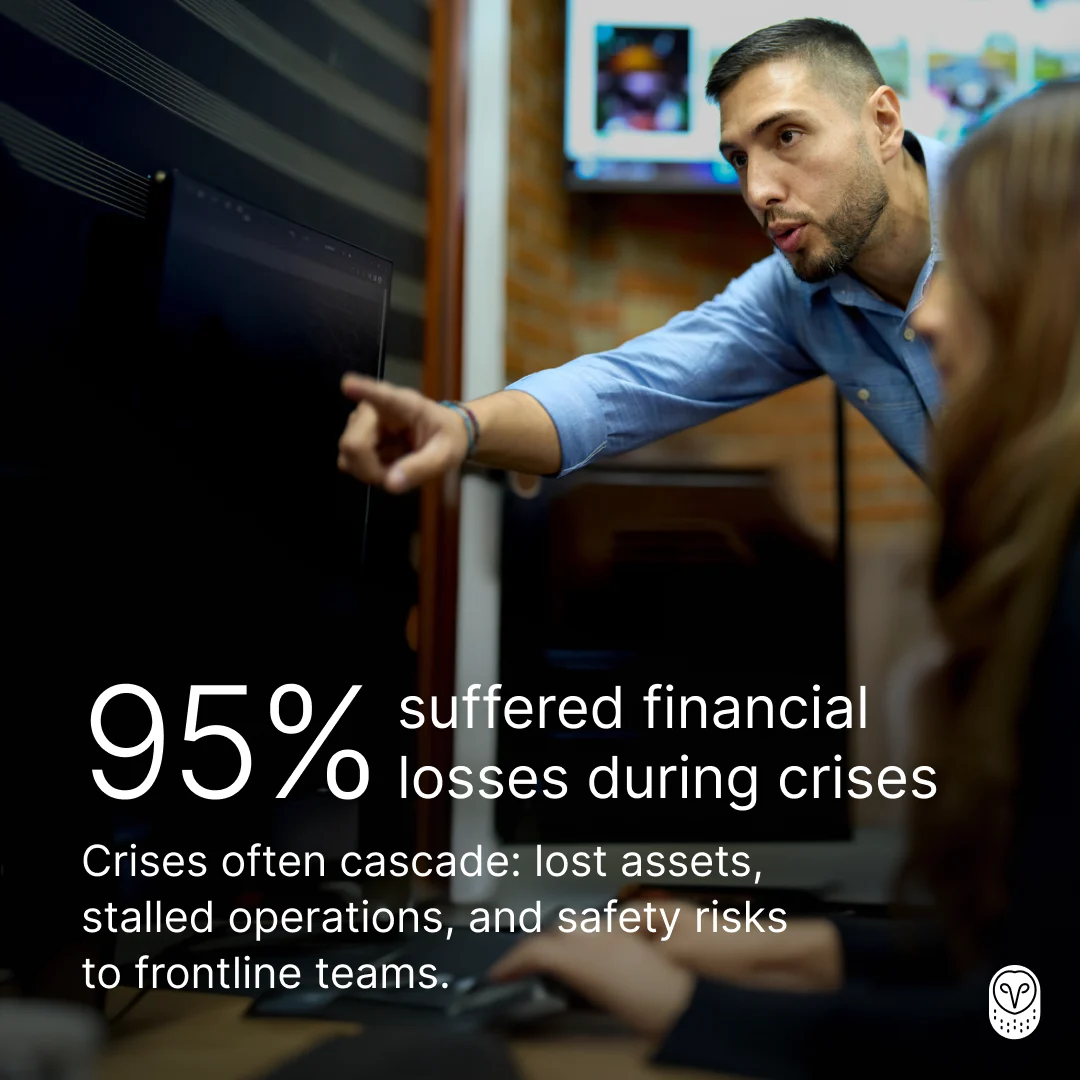
Let’s consider the recent wildfires in California. As they spread, if first responders don’t know where their people or trucks were located—that’s not simply a back office challenge. It’s a significant safety risk. And it has real consequences for our communities, where every minute matters in responding to a crisis.
People at risk: It’s not just about equipment, vehicles, and assets. It’s about the people. Nearly 80% of leaders worry about losing the ability to communicate with their frontline teams when critical infrastructure fails. When an emergency happens, not hearing back from your teams is frightening. But it doesn’t have to be that way. What if you can stay connected, even in disaster zones and extreme environments?
Financial hits: Our report found that 95% of organizations have lost money during a crisis because they couldn’t locate critical assets.
The transformative journey of technology
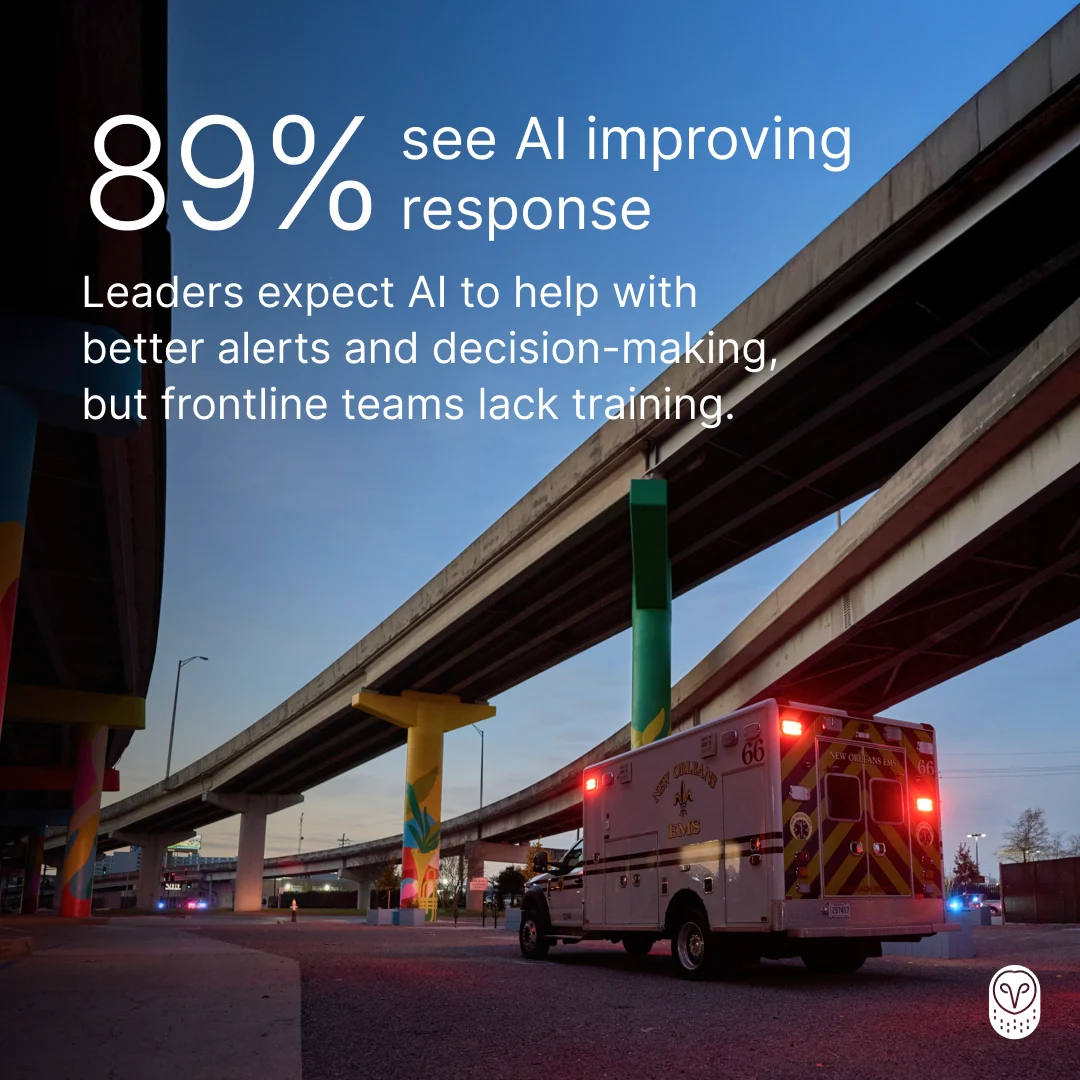
Let’s go on a journey. It’s a wonderful journey. It’s a journey from a reactive to a proactive approach to disaster response. There are three phases in that journey:
AI as the ultimate unlock: An amazing 89% of industry leaders believe AI is going to fundamentally change the game for disaster response. We believe that too. In fact, AI is so powerful for physical operations that it has the potential to save more lives than the last century of safety inventions for the frontlines. It unlocks emergency planning, early detection, and real-time support so you can make fast decisions and deploy teams and resources.
Training our people: It’s not only about technology. It’s about people. And the report also highlights a training gap: 79% of leaders say their teams aren’t fully trained to use digital tools in a crisis. We need to address this together, by making training delightful and easy to consume.
It’s getting more urgent: 82% acknowledge that the rising frequency of disasters is reshaping the way we train and equip the workforce with technology.
The power of a plan for resilience
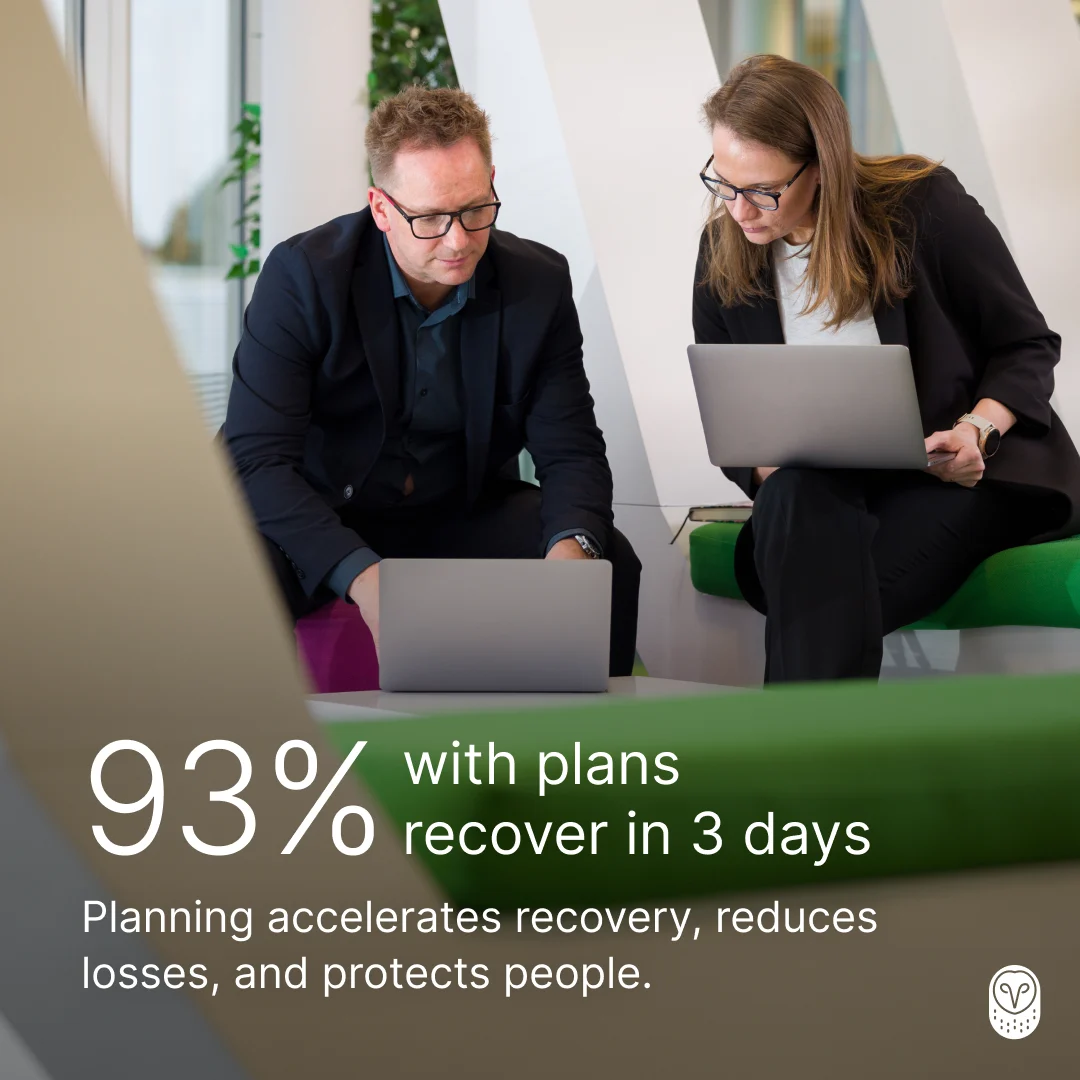
Even though the report uncovers some alarming gaps in disaster preparedness, it also illustrates that being prepared makes all the difference.
Rapid recovery: In fact, 93% of organizations with an emergency plan in place are able to get back to normal operations within just three days of a major event. That’s huge. That proves that being proactive is an imperative for your people and business.
One of our customers who depends on Samsara during wildfires and harsh storms shared that: “Extreme weather events are hitting harder and faster than ever before, and you can’t afford to be caught flat-footed. When infrastructure is down, having real-time visibility into where our people and equipment are is critical. It’s the difference between controlled disruption and complete chaos.”
Are you ready for tomorrow’s challenges?
This report makes one thing clear: now is the time to act. It’s our shared responsibility to the frontline workers who show up and get our kids home from school, get the emergency services to us when we’re in need, and protect our communities. For me, safety is a personal mission. At Samsara it’s in our DNA. In an era where disasters are increasingly becoming the norm around the globe, we must embrace AI and technology as widely as possible.
We must support our teams with the tools and technology to stay connected and protected. The beautiful thing is that with advancements in AI we have the ability to tackle this important challenge. I believe that together we can usher in a safer, more resilient future of physical operations. Now let’s build that future together.
Download the reportGet the latest from Samsara
Subscribe now